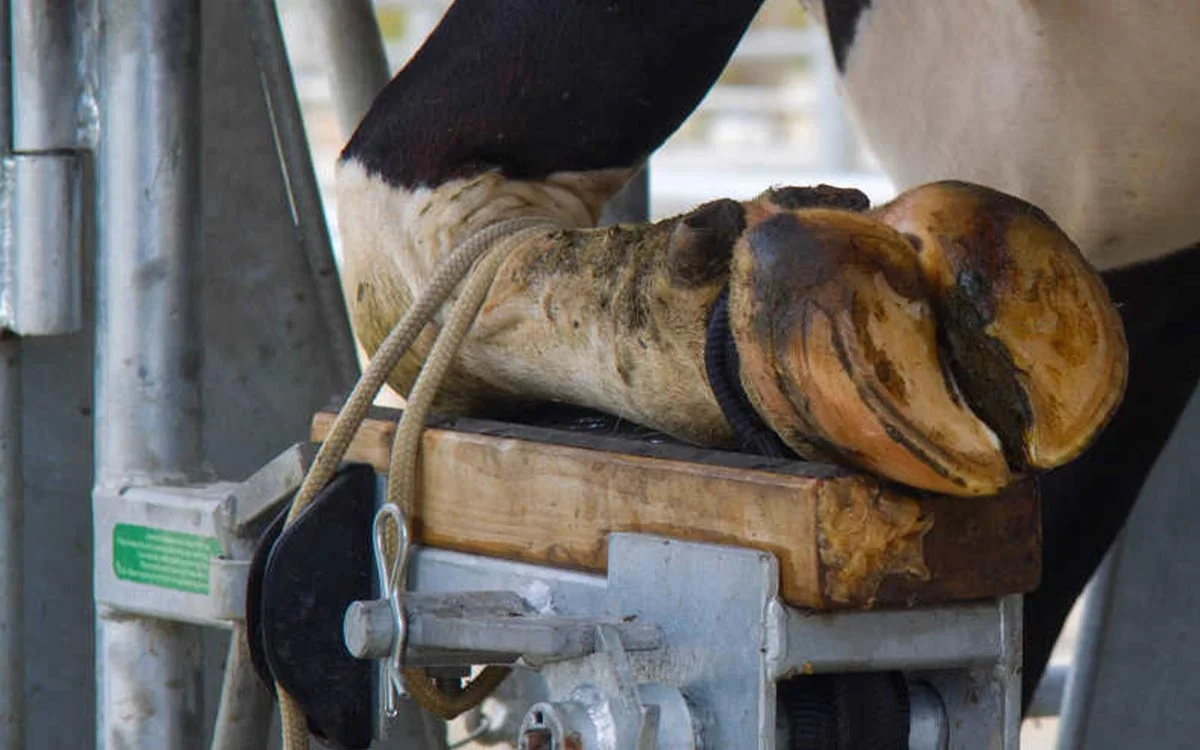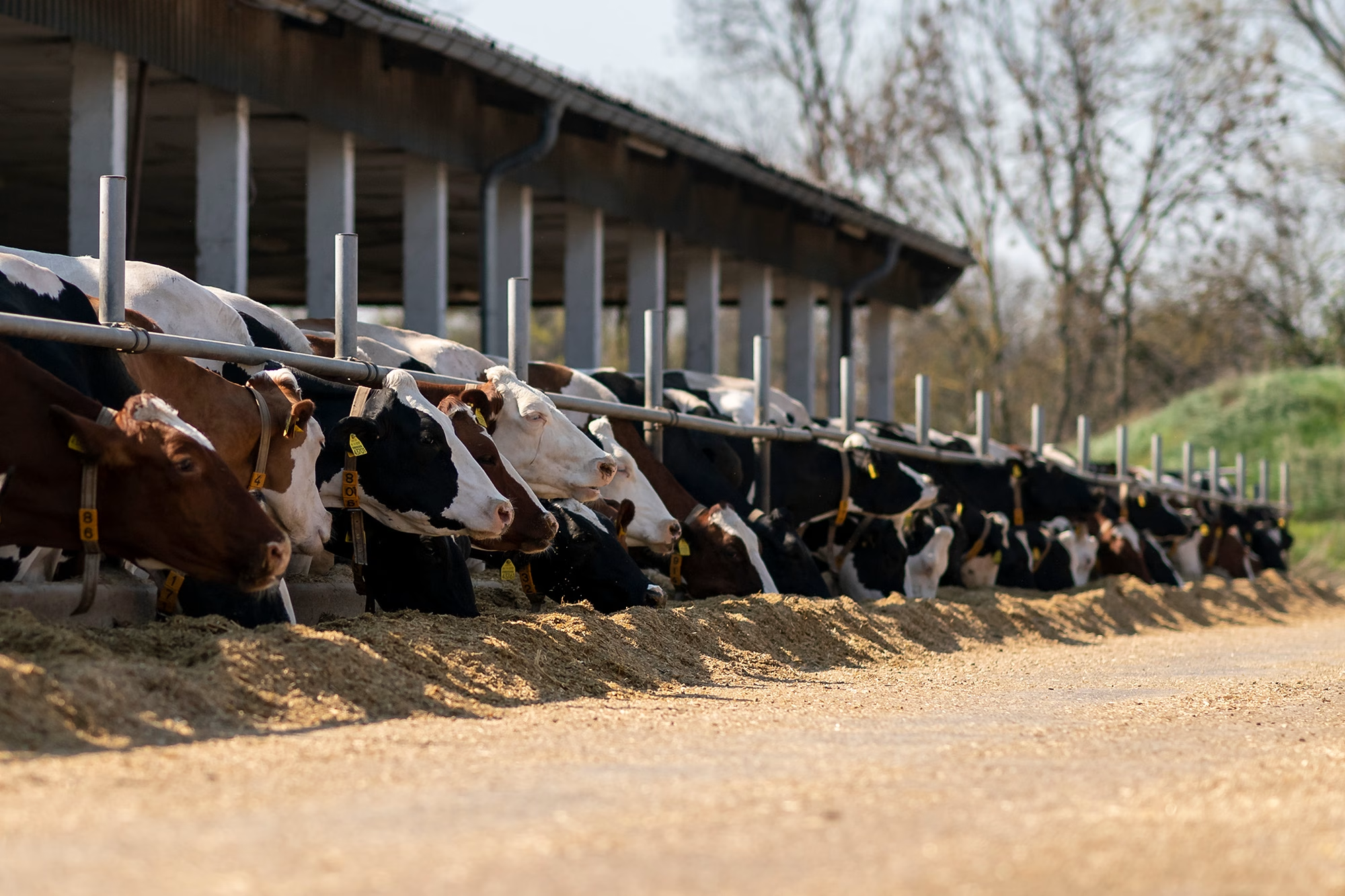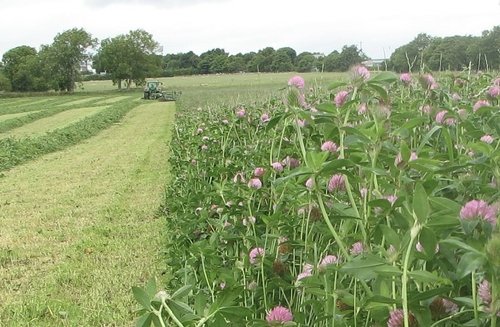Unraveling the persistence of lameness in dairy cattle: What underlying factors perpetuate this challenge, and what can be done to enhance hoof health management?

Imagine the daily struggle of walking on a sore foot without treatment. This is the reality for many dairy cows afflicted with Lameness, a chronic condition affecting their welfare and output. Hoof health remains a recurring issue on dairy farms, even after years of identifying causes and seeking remedies. Lameness is a complex disorder influenced by many factors, including management strategies, living conditions, and cow health. These interconnected factors make treating Lameness a challenging problem that requires comprehensive treatment plans. Why is this crucial? Lameness causes pain, reduces milk output, and impacts reproductive health, leading to significant financial losses for farmers. Better welfare and sustainable production can be achieved by understanding and resolving the underlying issues.
Urgent Action Needed: The Unyielding Challenge of Lameness in Dairy CattleEven with several therapies, Lameness in dairy cattle is still a worldwide issue. Studies reveal that Lameness has mostly stayed the same over time. A recent literature analysis showed that Lameness has an average worldwide frequency of 24 percent among dairy cows. Affected by geographical variations, facility types, milking methods, and diagnostic criteria, prevalence rates fall between 15 and 37 percent. Despite attempts to control Lameness with better housing, nutrition, and herd management, these rates have remained high. This underscores the urgent need for innovative and integrated methods of hoof health care to address Lameness in dairy herds.
Genetic Selection and Early Lactation: Complex Factors Driving Lameness in High-Producing Dairy Cows
Analyzing cow-specific elements helps one understand how Lameness presents and persists in dairy herds. Particularly in Holsteins, genetic selection for high milk output has raised disease sensitivity, including Lameness. This is exacerbated by the rumen acidosis-laminitis combination, which is expected in early lactation brought on by too much grain intake. It disturbs rumen function and compromises hoof structures.
Evaluation of dairy cow health and lameness risk depends critically on body condition score (BCS). Cows generally observe a BCS drop during peak lactation—between 60 and 100 days in milk—which results in a smaller digital cushion required for shock absorption. This increases cows’ susceptibility to hoof damage, particularly in the early weeks after calving when metabolic and hormonal changes weaken hoof tissues.
Older cows, those with high milk output, and those with a history of claw lesions all carry more risk. Unresolved hoof problems build up with every lactation cycle, increasing lameness sensitivity. These elements emphasize the necessity of focused treatments targeting genetic and managerial aspects to reduce Lameness in dairy cattle.
Environmental Conditions: A Crucial Factor in Dairy Cattle Hoof Health
Environmental factors significantly influence Lameness in dairy cattle. Animal welfare depends greatly on housing, including confinement facilities with easily accessible or tie stalls. Poorly planned stalls might cause cows to stand for extended durations, aggravating hoove issues. Another essential consideration is flooring; cows like softer floors that lessen limb strain. Concrete flooring, which is standard in dairy buildings, may seriously affect hoof condition. Although softer coverings like rubber mats have advantages, their general acceptance is hampered by cost and maintenance issues.
Access to outside habitats permits more natural behaviors, relieves cows from harsh surfaces, and improves hoof health. Pasture grazing enhances general welfare. Moreover, heat stress from growing global temperatures aggravates metabolic problems and dehydration, compromising hoof structures and raising lameness susceptibility.
Comprehensive Solutions: The Key to Protecting Cow Welfare and Output
The Far-Reaching Impact of Lameness: Evaluating Welfare and Economic Consequences in Dairy Herds
Given its significant welfare and financial consequences, Lameness in dairy cattle is a major global issue for the dairy sector. Lameness causes suffering and discomfort, compromising critical processes like milk production and reproduction. This disorder limits normal behavior and violates basic welfare norms.
Economically, lameness results in direct expenses, including labor, veterinary care, hoove clipping, and therapies. Indirect costs include lower milk output, worse reproductive performance, higher culling rates, and possible long-term health problems, which add a significant financial load.
Early identification is still challenging; studies show that only a third of the lame cows in farmers’ herds are identified. This under-detection exacerbates the issue as minor early symptoms are often overlooked and lead to more severe and expensive Lameness. Therefore, there is an urgent need for improved diagnosis techniques and proactive healthcare plans to identify and address Lameness early.
The Bottom Line
Lameness is still a common problem in dairy herds that calls for a complete strategy despite decades of work and study. While environmental factors such as house design, flooring materials, and heat stress play vital roles, genetic predispositions and intense milk production increase sensitivity. Lameness has far-reaching consequences for decreased animal welfare and significant financial losses for dairy producers. Good preventive and management calls for an all-encompassing plan, including genetic control, better diet, better housing, and close health observation. The dairy sector has to implement this multifarious strategy. Dairy cow well-being may be improved, and a more sustainable future for dairy farming is guaranteed by encouraging cooperation among researchers, veterinarians, and farmers and investing in technical developments and management techniques.
Key Takeaways:
- Complexity of Lameness Factors: Multiple intertwined factors at both cow-level and environmental levels contribute to the persistence of lameness.
- High Global Prevalence: The average global prevalence of lameness in dairy cows is around 24%, with rates varying significantly based on regional and facility differences.
- Cow-Specific Vulnerabilities: Modern dairy cows, especially high-producing Holsteins, are more susceptible to lameness due to enhanced genetic selection for milk production and associated health complications.
- Environmental Impacts: Housing type, flooring, stall design, and heat stress play pivotal roles in the incidence and severity of lameness in dairy herds.
- Under-Detection Issues: Research indicates that farmers often recognize only a third of clinically lame cows, missing early signs that could prevent progression.
- Economic and Welfare Concerns: Lameness incurs significant direct and indirect costs while substantially affecting animal welfare through pain and impaired biological functions.
- Need for Integrated Strategies: An integrated approach, combining awareness, technological advancements, and proactive health management, is essential to mitigate lameness effectively.
Summary:
Lameness is a chronic condition affecting dairy cows’ welfare and productivity, causing pain, reduced milk output, and reproductive health issues. Despite various treatments, the global prevalence rate of Lameness is 24%, with rates ranging between 15 and 37%. Genetic selection and early lactation are complex factors contributing to Lameness in high-producing dairy cows. The rumen acidosis-laminitis combination exacerbates disease sensitivity, compromising hoof structures. The body condition score (BCS) is crucial in evaluating dairy cow health and lameness risk. Older cows, those with high milk output, and those with a history of claw lesions carry more risk due to unresolved hoof problems. Environmental conditions also significantly influence Lameness in dairy cattle. Housing, including confinement facilities with easily accessible or tie stalls, can affect hoof health. Poorly planned stalls and inadequate flooring can worsen hoof conditions. Access to outside habitats and pasture grazing can improve hoof health. Heat stress from global temperatures exacerbates metabolic problems and dehydration, increasing lameness susceptibility. Comprehensive solutions are essential to protect cow welfare and output, including genetic control, better diet, housing, and close health observation. Cooperation among researchers, veterinarians, and farmers and investment in technical developments and management techniques can help achieve better welfare and sustainable production for dairy cattle.
















